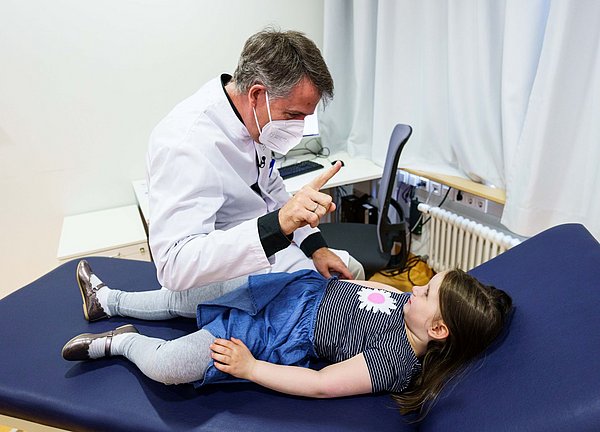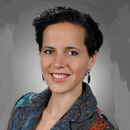The Hopp Children’s Cancer Center Heidelberg (KiTZ) is a joint institution of the German Cancer Research Center (DKFZ), University Hospital Heidelberg (UKHD) and the University of Heidelberg (Uni HD).
Around 2000 children in Germany are newly diagnosed with cancer every year. Because cancer is comparatively rare in children, there are also far fewer innovative treatment options available to them than there are for adults. New approaches aimed specifically at children, like targeted drugs and cancer immunotherapy, which are already used successfully in adults to treat certain cancers, are almost non-existent. “But we urgently need modern therapy approaches for children,” says KiTZ Director Olaf Witt, who led the INFORM study. Olaf Witt is also a pediatric oncologist at University Hospital Heidelberg (UKHD) and leads the clinical cooperation unit for pediatric oncology at the DKFZ. “Around a fifth of young cancer patients cannot be cured because the usual standard therapies no longer work in relapsed patients,” he says.
The INFORM study (INdividualized therapy FOr Relapsed Malignancies in childhood), which started in 2015, aims to give these children a second chance. In the event of a relapse, physicians and researchers look for molecular targets that they can use to develop more effective treatment options tailored to the tumor biology. The results of the long-term observation now show the benefit of cancer genome analysis for the young patients. Together with physicians from the UKHD, researchers from the DKFZ and colleagues from the GPOH, the KiTZ team developed an algorithm that they used to assign molecular changes in a tumor to one of seven categories, from ‘very suitable’ to ‘unsuitable’, denoting their suitability as a therapeutic target structure.
For example, genetic changes in the tumor were classed as very suitable if they represent biological target structures that can be targeted directly with active pharmaceutical ingredients for which drugs have already been approved or for which clinical trials are already underway. The attending pediatric oncologists at the 72 centers in eight European countries were then able to use this information to inform their therapy decisions.
“In total, we were able to identify theoretically treatable genetic target structures in 225 of the 519 patients,” explains KiTZ researcher and pediatric oncologist Cornelis van Tilburg, who is the lead author of the paper. “In 42 of the 519 patients we were able to rate the target structures as ‘very suitable’,” he says. Half of these patients were then treated with a targeted cancer therapy on the recommendation of their doctor, for example as part of a clinical trial. Compared with all the other patients, this doubled the length of time with no cancer progression. In eight percent of patients it was also possible to identify the precise form of tumor based on the genome analysis.
In addition, 39 of the patients were found to have an inherited genetic predisposition for cancer, which will be used in advice and prevention programs for families.
KiTZ Director Stefan Pfister, who is a head of department at the DKFZ and a pediatric oncologist at UKHD, sees the results of the study as a first important step, showing that some of the children affected can benefit from modern cancer genome analysis. “Ideally, however, the molecular diagnoses should not wait until a relapse and be used only as a last resort,” he says. “In most young cancer patients, the illness is already far advanced by this point. If we could offer patients with a particularly high risk of relapse a tailored therapy at an earlier stage, it would almost certainly be much more effective.”
Stefan Pfister believes that the main obstacle to optimizing the use of precision oncology in children is a lack of clinical trials with new drugs specifically for children. The big difference here between children’s and adult oncology can also be seen in the DKFZ/NCT/DKTK MASTER cancer genome sequencing program for adults, the latest results of which have just been published in the same issue of Cancer Discovery. Eighteen percent of the patients included in the MASTER program are already receiving therapy recommendations, where the compatibility of the target structure and drug has already been tested for the tumor disease in question in several clinical trials and is therefore more reliable. “We are still a long way from those kinds of figures in children’s oncology,” says Stefan Pfister.
In future, more patients with certain target structures are therefore to be offered the option of taking part in clinical trials with particularly promising drug combinations. Together with the patient networks of the GPOH, the KiTZ is therefore planning a number of innovative clinical trials for young patients.
The INFORM program is funded by Deutsche Krebshilfe (DKH 111234), the German Childhood Cancer Foundation (DKS 2014.12), the German Cancer Consortium (DKTK), the German Federal Ministry of Education and Research (BMBF 01KX2025), Bild e.V. “Ein Herz für Kinder” (PÄ-24151), the Scheu family and the Federal Ministry of Health (BMG ZMVI1-2520IGW004).
Original publication:
Cornelis M. van Tilburg, Elke Pfaff, Kristian W. Pajtler, Karin P.S. Langenberg et al The pediatric precision oncology INFORM registry: clinical outcome and benefit for patients with very high-evidence targets. In: Cancer Discovery (Online Publikation 09. August 2021).




